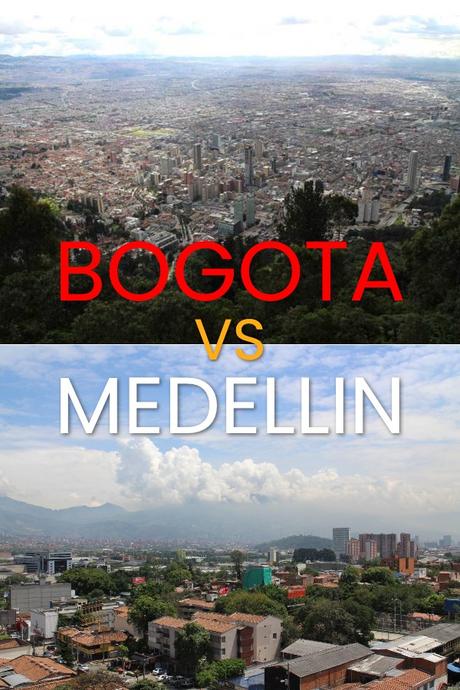Comparing Bogotá with Medellín, the two biggest cities in Colombia is bound to ruffle some feathers. The aim of this blog post is to offer a good comparison of the two biggest cities in Colombia and two of the most desirable cities in Latin America. If you're a traveller, digital nomad, or expat looking for a place to live or even just to spend a few months, read on. I've spent a good amount of time in both cities and like both. But which is best?
First of all, "best" is a relative term. Best for one person could be worst for another. Just because a city ranks highly in one specific area does not mean it takes a clean sweep of the awards. I will try to give a good overview of both Bogotá and Medellín as places to spend longer than a few days. The thing is, many cities are superb for visiting short-term and horrible places to spend longer than a few weeks. I can think of quite a few. And the reverse is true. Some places are impossible to get your head around in a couple of days, but they slowly draw you in.
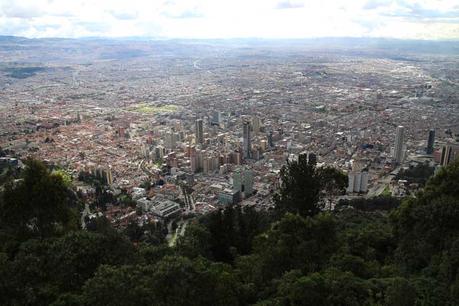
An important point to know is that Rolos (people from Bogotá) and Paisas (people from Medellin) are different in temperament, attitude, and maintain different lifestyles. There's a fierce rivalry between the two cities. You'll often hear Paisas talk down about Bogotá. In a way, it's understandable. Inhabitants of most provincial cities around the world regard the capital of Colombia with distrust and envy. Rolos, in general, have good things to say about the capital of Antioquia. So if you want an unbiased opinion of Colombia's capital, don't ask someone from Medellin.
I'd also like to point out that travelling in a country and living in a city or country are totally different experiences. There are many cities around the world that I love to visit but could not see myself living there. On the other hand, some seemingly less interesting places are fantastic cities to live in.
Here's a comparison of two of South America's best-known cities based on medium to long-term travel plans.
Weather
Bogotá is situated at 2500m, right in the Andes mountains. It's also in a valley which traps the clouds and moisture. The temperature ranges from x to x and it rains a lot. Let's just say that nobody goes to Bogotá for the weather. Of course, some people don't like the heat or the sun. In that case, it's perfect. Bogotá can get quite chilly at night so you'll need a jacket with you every day if you're going to be outside. Remember that Colombia lies on the equator and the sun sets around 6 pm.
Medellin, on the other hand, is said to have an eternal spring. There is very little seasonal difference in Colombia so the temperature and weather are similar all year round. The differences in climate depend on the elevation and proximity to the sea.
Like Bogotá, Medellin is in a valley, but it's 1000m lower in elevation so the temperatures are much warmer. But the thinner air keeps the temperatures below 30 degrees most of the time. The climate here is considered by many to be perfect. I found it a little stuffy. I'm not sure why that is but it could be caused by pollution or the valley trapping the air - there's very little wind in Medellín so the heat seems to 'hang in the air'.
Cambridge Masks use filtration technology to filter out harmful dust, pollution, bacteria, and viruses. These are heavy-duty masks, but they stop nearly 100% of smaller particulate matter such as PM2.5 and PM0.3, gas pollution such as Volatile Organic Compounds (VOCs), Ozone, Benzathine, and Formaldehyde. So if you find yourself getting headaches and having breathing issues, try one of these. I use one whenever there's a high air pollution warning.
Travel
The main entry into Colombia is via the El Dorado International airport in Bogotá. Medellín also has an international airport (José María Córdova International Airport), albeit with less traffic. Medellin's actual airport is situated about 45-60 minute drive away near the town of Rionegro.
For onward travel from Colombia to other cities in South America, the connections from Bogotá are much better. It will also be cheaper (in most cases) to fly from here.
Journey time from Bogotá to Medellin by air is around 1 hour. Add on the (probably slow) journey to El Dorado Airport and the journey from Rionegro to central Medellin and you're talking about half a day's journey time. Expect to pay around USD $70
Journey time from Medellín to Bogotá by bus is around 8 hours. Expect to pay around USD $30
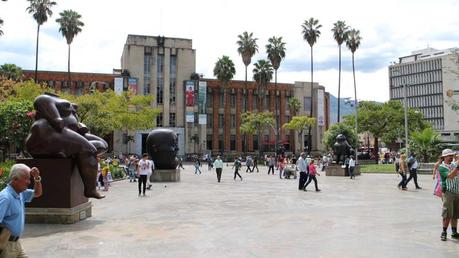
Getting Around
Getting around any city in Colombia is a pain. Bogotá is one of the most congested cities in the world, so even though Medellín has it's own problems, they are nothing compared to the daily gridlock of the capital. If you can avoid driving in Bogotá 2-3 hours either side of rush hour in the morning and the evening, your life will be so much better for it. There is public transport in both cities but they pale in comparison to other major world centres. Bogotá has a rapid tram system which runs in between the opposing lanes of the main motorway. This can actually save you a lot of time. It does get extremely busy though and there's really only one route. The city is long and narrow (adding to the problem) and 8 million people live here so it can take a while to get anywhere.
Medellin, in comparison, is 4 times smaller and the tram system is better. In fact, the tram system is actually a metro which runs above the city for some sections. Using the metro here can save a lot of time and money. Taxis are expensive in both places when you're literally sitting at a standstill for hours.
A great feature of the Medellin metro system is the connections with the cable cars which transport people up to the hills surrounding the city. There are two main lines, north to south and east to west, and a tranvía (tram). The metro also links in with the bus routes. Fares are cheap and the trains run from around 4 am to 11 pm.
Medellin clearly beats Bogotá hands down in the area of public transport.
Bogotá caters more to cyclists and in recent years the citizens of the capital have started to realise that the car is not the only mode of transports. Cycle lanes run all around the city and they are a relatively safe way to get around as many don't run along main roads, and the ones that do are separated from the traffic.
Culture
You might think that because Medellín and Bogotá are both Colombia cities that the culture will be identical. The reality is quite different.
Paisas (as the people of Medellín call themselves) are quite proud of not being from the capital. This is a city of salsa, outdoor parties, and even Tango (Carlos Gardel, the greatest Tango singer that ever lived, performed regularly in the city). The food preferred by the inhabitants of both cities is quite different from each other.
Rolos (as the people of Bogotá are known) are seen as much colder in temperament than the more fiery people of Antioquia (the region of Colombia where Medellín in the main city).
Bogotá's musical scene is more diverse than any other city in the country with many fans of rock music, jazz, and other styles. In Medellín, you will hear a non-stop soundtrack of Salsa, Bachata, and Reggaeton. Even if you like these styles (I do), you'll crave (I did) some other styles of music to break the constant soundtrack of Latin dance music.
Bogota's nightclubs range from the grungy to the high end and there's no shortage of options. New places appear all the time.
People spend a lot more time outside in the city of Medellín, especially at night when the temperature hovers around a delicious 20 degrees. Bogotá is often too cold for that so people spend a lot more time indoors.
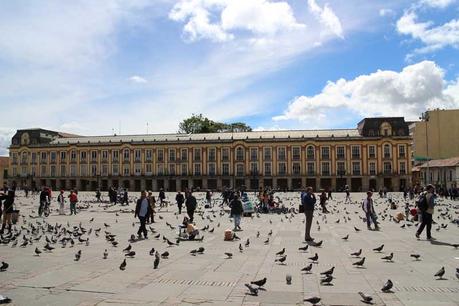
Eating and drinking
Bogotá is the clear winner here in terms of sheer variety and quality. Bogotá is more cosmopolitan with a large number of expats and immigrants (from Colombia and overseas). You can find almost any cuisine you like in the Bogotá, whereas Medellin is more limited. The local regional food is the most prominent type of cuisine you'll find anywhere. If you don't like Paisa food, you might have a hard time eating out, unless you like pizza and McDonalds.
It's hard to mention the restaurant scene in Bogotá without discussing one of the most influential places in the country, Andrés Carne de Res. Andrés can only be described as a sort of food palace with dancing. It's unique.
Most of the best restaurants are found in the barrios of Chapinero and Chicó Norte. There are a few good ones in La Candelaría too.
Poblado, Medellin's hip neighbourhood, has the best choice of mid-range and high-end restaurants in the city. But there are also plenty of cheap places in the barrio known for its foreigner and expat community.
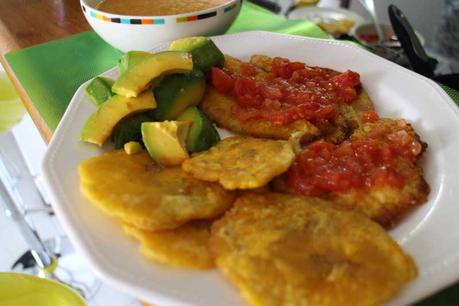
Activities
For cultural events, nothing beats Bogotá. As with most countries, the capital has the resources and people to host diverse cultural activities. This is where most of the museums, galleries, and event centres are located and where most of the concerts, exhibitions, and festivals take place. The Candelaría, the heart of Bogotá, offers beautiful colonial-era streets, the Museo Botero, Centro Cultural Gabriel García Márquez, Museo del Oro (Gold Museum), and a whole lot more. You could lose yourself for days in La Candelaría.
For outdoor activities, Medellin is the winner thanks to its climate and proximity to the mountain, jungle, and lakes. Neither city is close to the ocean but Medellín does have Guatape for windsurfing, boating and swimming, located pretty closely.
If you like dancing, Salsa is everywhere and you shouldn't have trouble finding classes and salsa nights in either city. Medellín probably offers more a more authentic salsa experience, while Bogotá will have more of a choice of other styles.
Keeping fit is easy in both places. Colombians like to hit the gym and are also keen cyclists.
Learning Spanish is easy in both cities although Bogotá has a greater choice of schools. The Paisa accent is probably a little harder to grasp but if you've learned any Argentine Spanish you might recognise some similarities (the use of 'vos' for example).
Shoppers will be much more at home in the Bogotá and cinema-goers, concert lovers, and night-clubbers will also find a lot more options here too. Colombia's biggest city has a long history and the churches, buildings, town squares, and other landmarks that the colonialists left are far more impressive here than anything in the provincial capital.
Noise
Noise levels are similar in both cities overall. There's very little difference between the two. The main factor is your location within each city. You can find quiet spots all over the place but right beside the motorway or downtown in either city can be noisy and chaotic. Bogotá does feel a bit more chaotic and crowded (it's much bigger than Medellin) so it's a lot harder to find absolute quiet but the general noise-level is pretty much the same in both places.
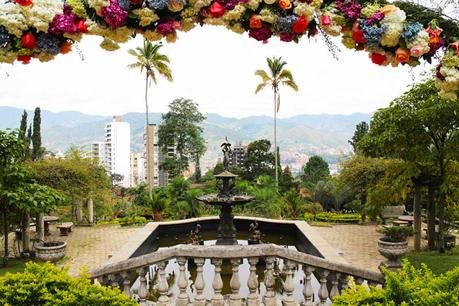
Environment
Colombia is one of the most biodiverse countries in the world. There are more different types of plants and animals here than almost any country. Only Brazil (a much larger country) bests it for the sheer range of flora and fauna.
As the country develops more and leaves it's violent past behind, tourism has become ever more important to the economy. It's a sad fact that in many cases, countries ignore their natural environment until it's economically in their interest to pay attention. I'm not saying that Colombia falls into this category of countries but judging by the history of disregard for the health of the natural resources, this probably played a part in the turnaround. The government knows that people come to Colombia for its culture but also the stunning landscapes of jungle, mountains, and wildlife.
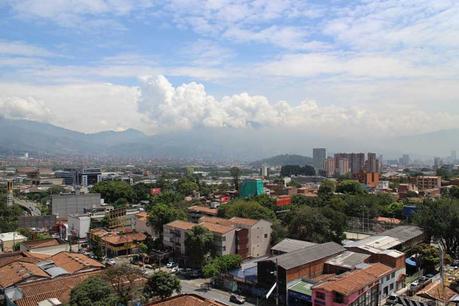
Safety
If you grew up in the 70s, 80s, or even the 90s, you will probably associate Colombia, at some level, with drugs & violence. Pablo Escobar and drug cartels dominated the news out of this country throughout the 80s. The country is much safer now, both for it's citizens and visitors. There are still problem areas and
Neither Bogotá or Medellín come close to the safety levels of Singapore or Tokyo (most cities can't) but they are much safer than many cities in Latin America.
The key is to know where you're going. Even if you don't, pretend you do. Most criminals are opportunists and can see an easy target a mile away. If you wander around the downtown area of Bogotá or Medellín at night asking for directions in English and whipping out your shiny new phone, your chances of being robbed are high.
Medellín was the stronghold of Escobar's cartel, but the only thing left now is tours around his estate and homes. Violence is rare outside of the slum areas.
Riding a motorbike or driving a car will statistically be the most dangerous activity you do in Colombia. A question you'll often hear from friends and relatives if you travel in the capital city is, "is Bogota safe?". Bogotá's safety record is better than Medellín but the latter somehow feels a bit less dangerous. It must have something to do with the sunny weather and relaxed locals. You'll probably get the same question about safety in Medellin from anyone that remembers the 80s or has seen the TV series Narcos.
Visas
As both cities are in the same country the visa situation will be pretty much the same.
For citizens of most western countries a 90-day visa, issued on arrival, is sufficient for travel and tourism in the country. A list of countries that do not require visas before arrival can be found on the Colombia Travel pages.
Remember that you can extend your visa once or return later for another 90 days within one calendar year. A maximum of 6 months stay in Colombia is permitted for most visitors.
Bogotá, being the capital and gateway for most international visitors, has more facilities for extending Colombian Tourist visas and obtaining visas for other countries.
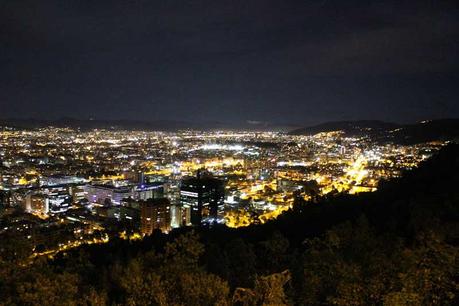
Costs
A very important topic, especially for people that plan to spend more than a few days in each city. Living long-term in a place makes you look at the smallest details of every potential cost. Rent, food, transport, entertainment, and medical bills all play a part.
As is almost always the case, anywhere in the world, the capital city of a country is the most expensive. With the largest number of businesses, tourist arrivals, expats, and citizens, Bogotás prices will always rise above those of Medellin.
Rent is about 20% higher in Bogotá, and groceries are not that far behind. Some things are a little cheaper, thanks to supply and competition but as a rule, you can calculate a 15-20% cost increase if you choose Bogota over Medellin to live in.
Which is the better city? That's a question only you can answer. I prefer Bogtotá but most foreigners seem to prefer Medellin. It comes down to your budget, what you like to do, your tolerance for hot or cold weather, and your lifestyle preferences. Try each city with an open mind. Visit without prejudice and then tell me which city has the edge!
